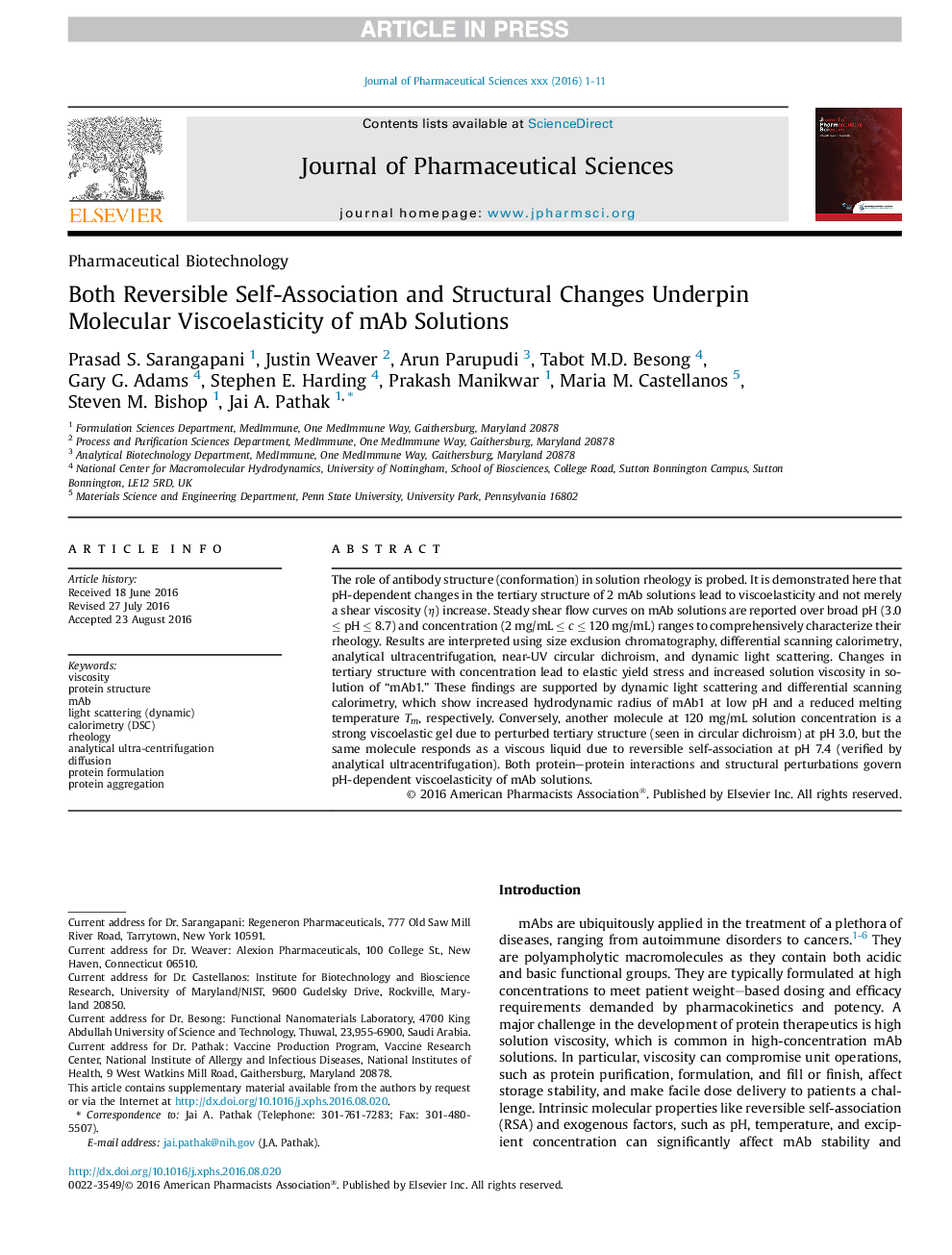| Article ID | Journal | Published Year | Pages | File Type |
|---|---|---|---|---|
| 8514697 | Journal of Pharmaceutical Sciences | 2016 | 11 Pages |
Abstract
The role of antibody structure (conformation) in solution rheology is probed. It is demonstrated here that pH-dependent changes in the tertiary structure of 2 mAb solutions lead to viscoelasticity and not merely a shear viscosity (η) increase. Steady shear flow curves on mAb solutions are reported over broad pH (3.0 ⤠pH ⤠8.7) and concentration (2 mg/mL ⤠c ⤠120 mg/mL) ranges to comprehensively characterize their rheology. Results are interpreted using size exclusion chromatography, differential scanning calorimetry, analytical ultracentrifugation, near-UV circular dichroism, and dynamic light scattering. Changes in tertiary structure with concentration lead to elastic yield stress and increased solution viscosity in solution of “mAb1.” These findings are supported by dynamic light scattering and differential scanning calorimetry, which show increased hydrodynamic radius of mAb1 at low pH and a reduced melting temperature Tm, respectively. Conversely, another molecule at 120 mg/mL solution concentration is a strong viscoelastic gel due to perturbed tertiary structure (seen in circular dichroism) at pH 3.0, but the same molecule responds as a viscous liquid due to reversible self-association at pH 7.4 (verified by analytical ultracentrifugation). Both protein-protein interactions and structural perturbations govern pH-dependent viscoelasticity of mAb solutions.
Keywords
Related Topics
Health Sciences
Pharmacology, Toxicology and Pharmaceutical Science
Drug Discovery
Authors
Prasad S. Sarangapani, Justin Weaver, Arun Parupudi, Tabot M.D. Besong, Gary G. Adams, Stephen E. Harding, Prakash Manikwar, Maria M. Castellanos, Steven M. Bishop, Jai A. Pathak,
